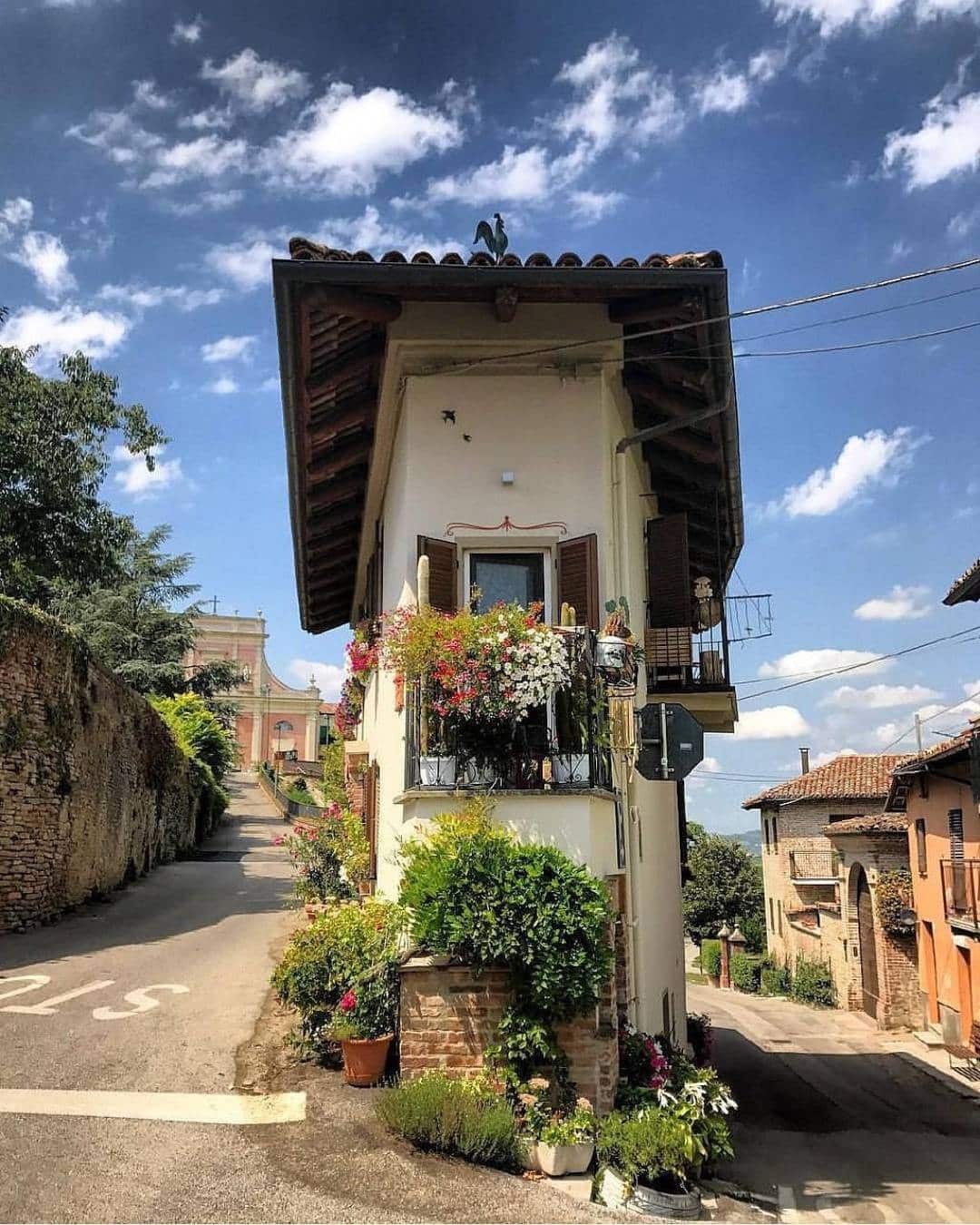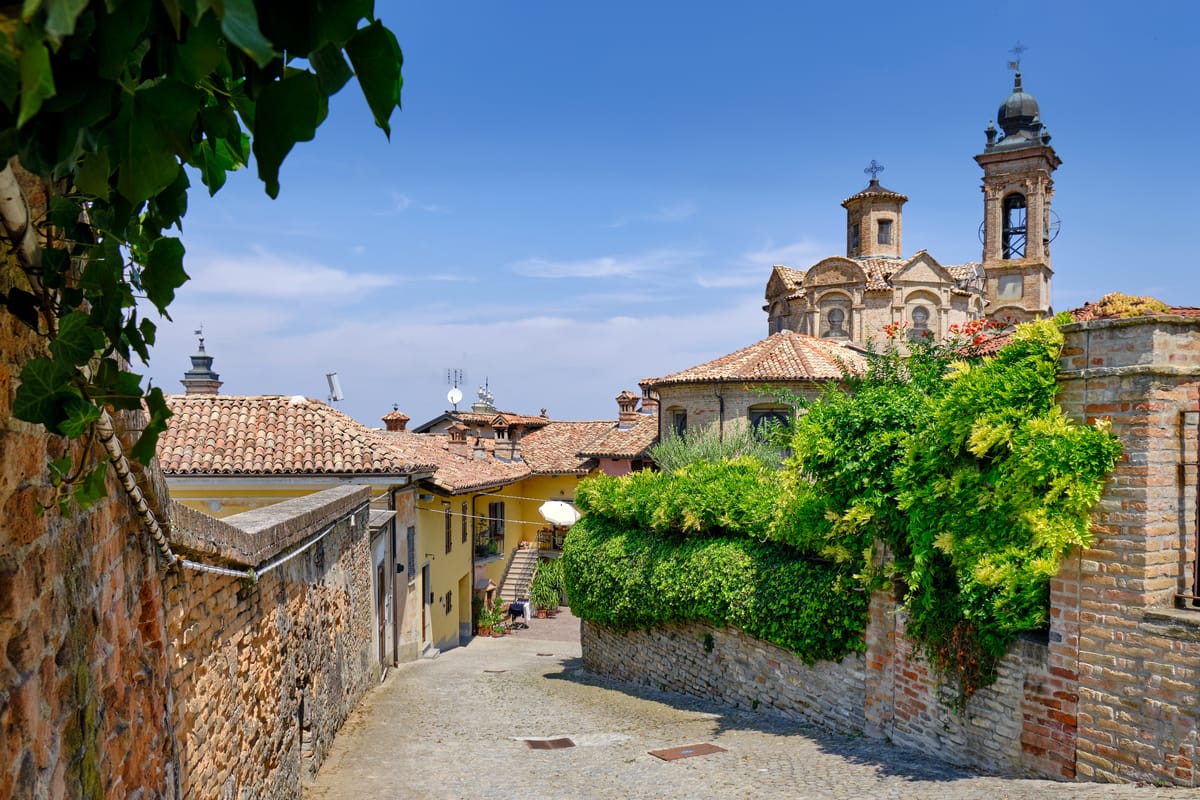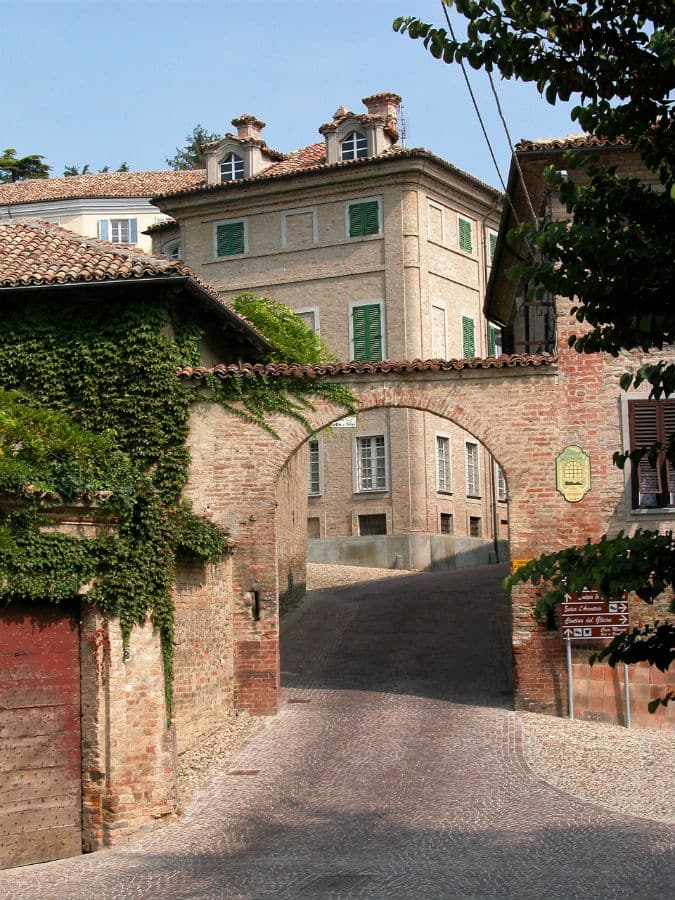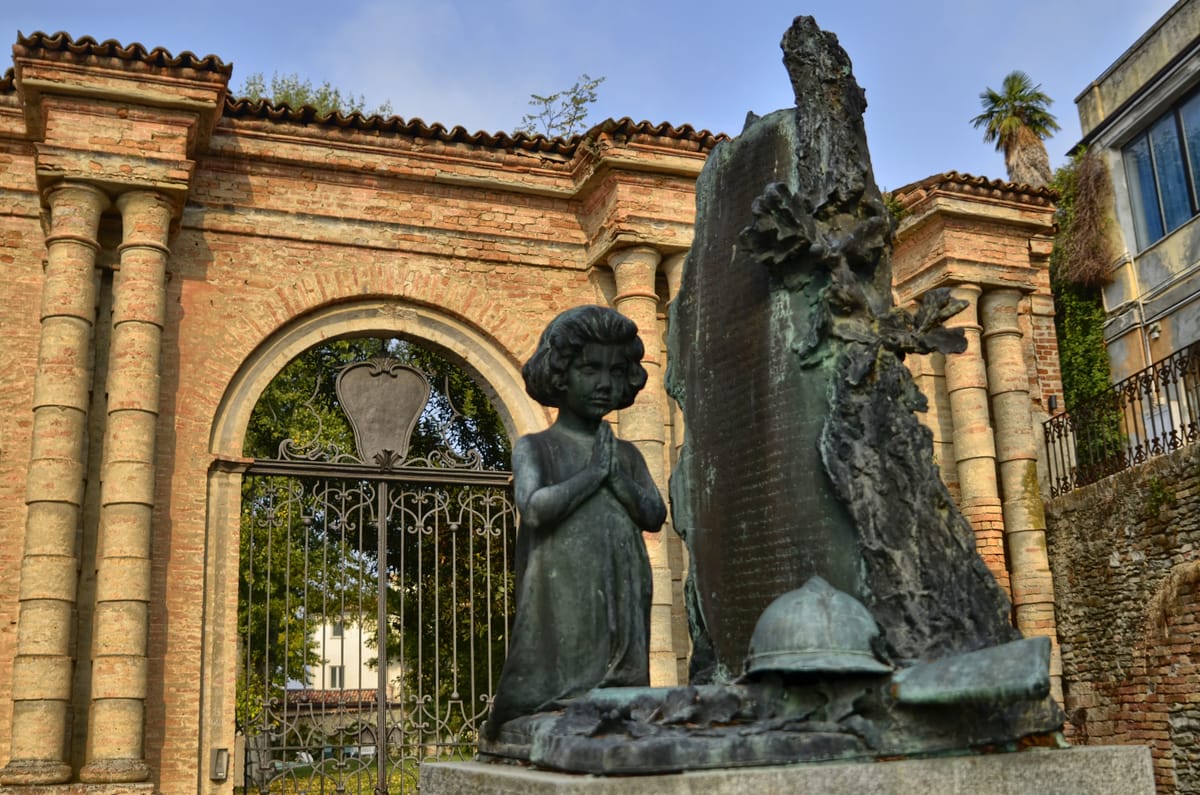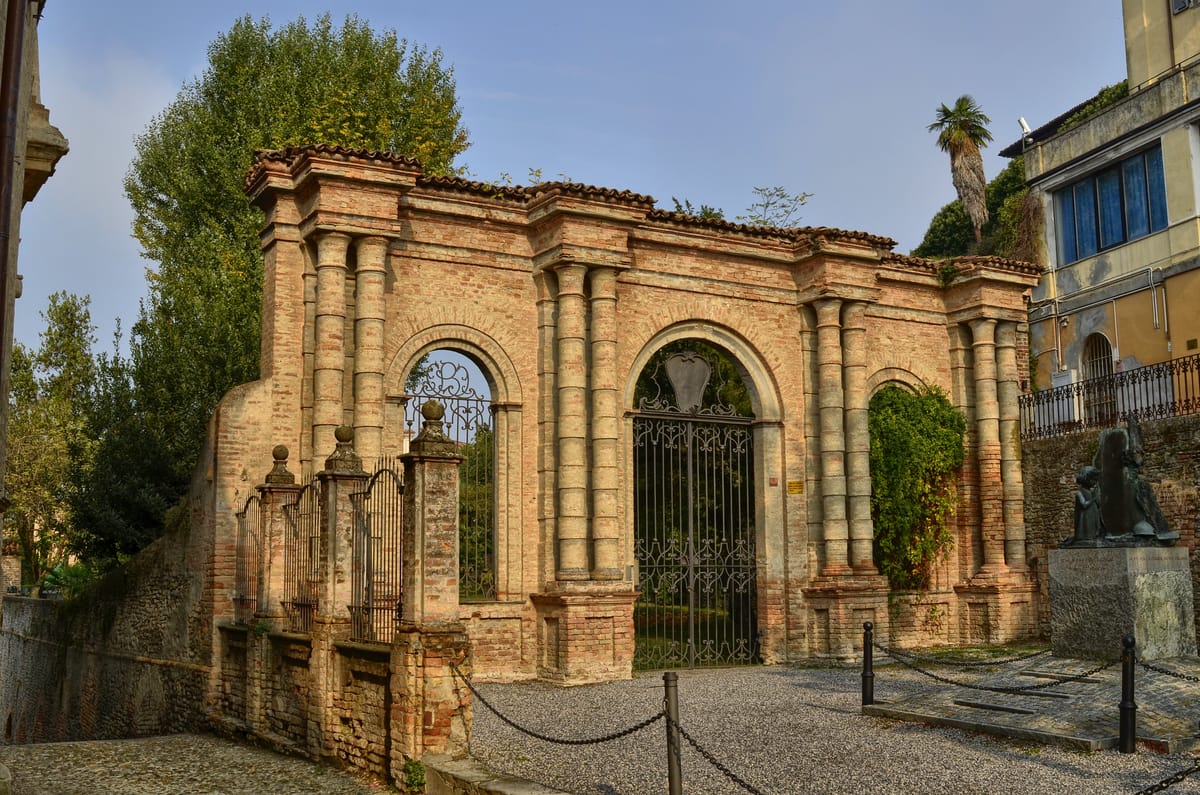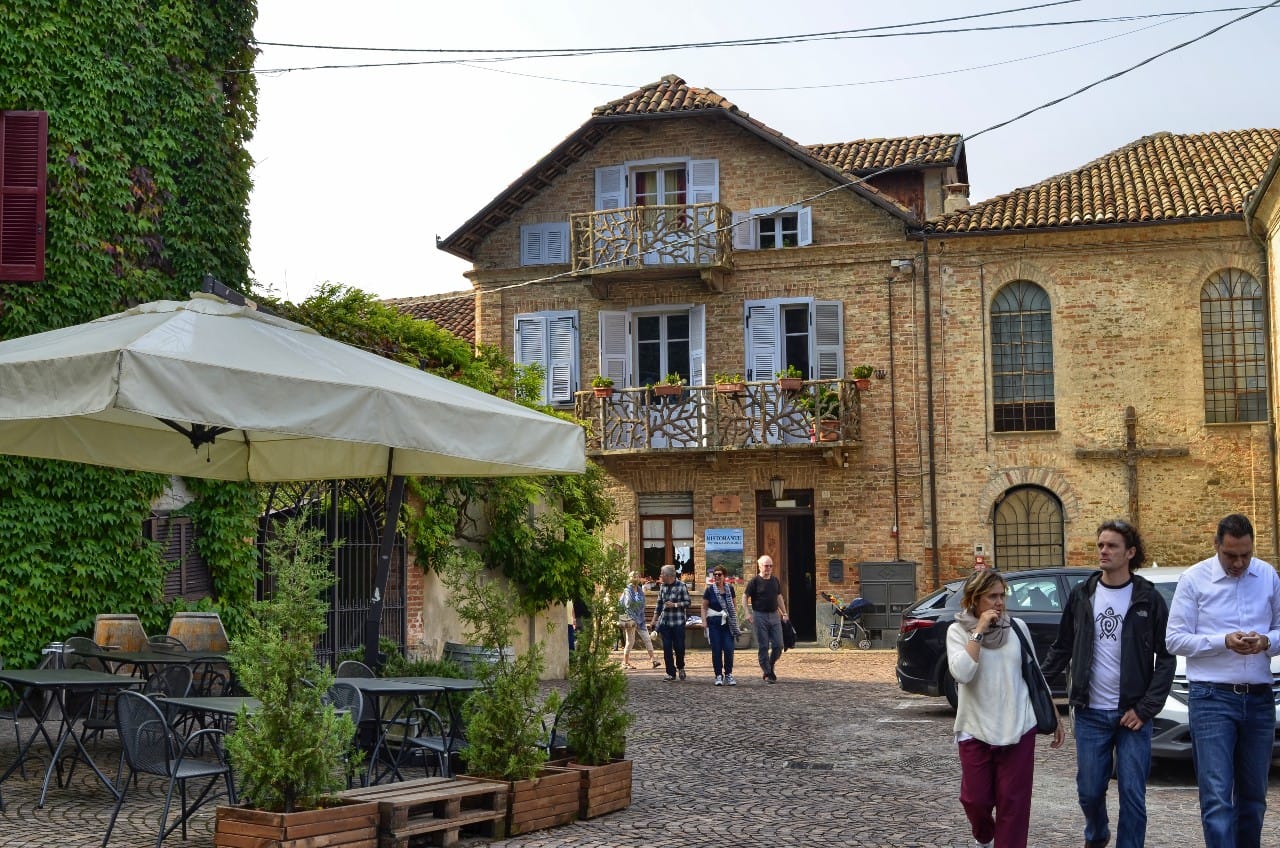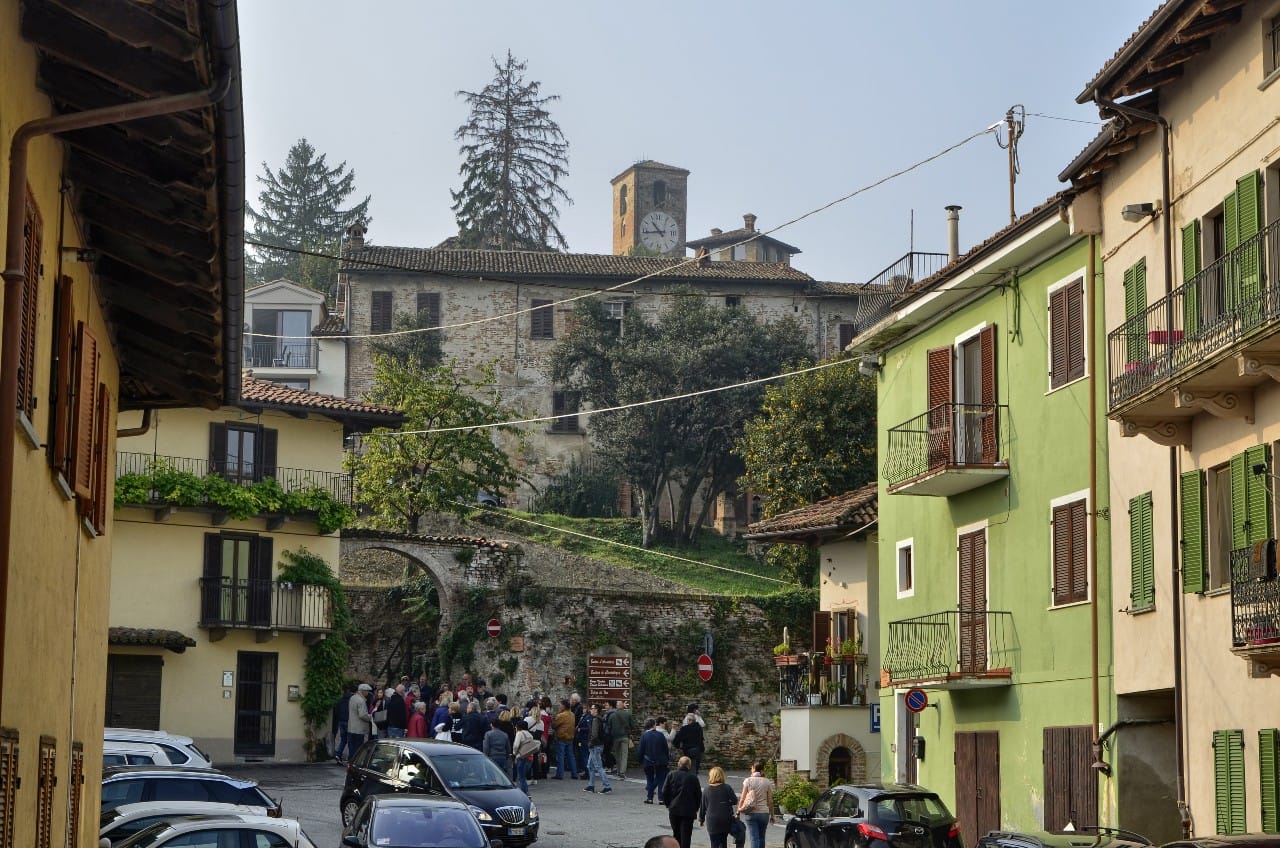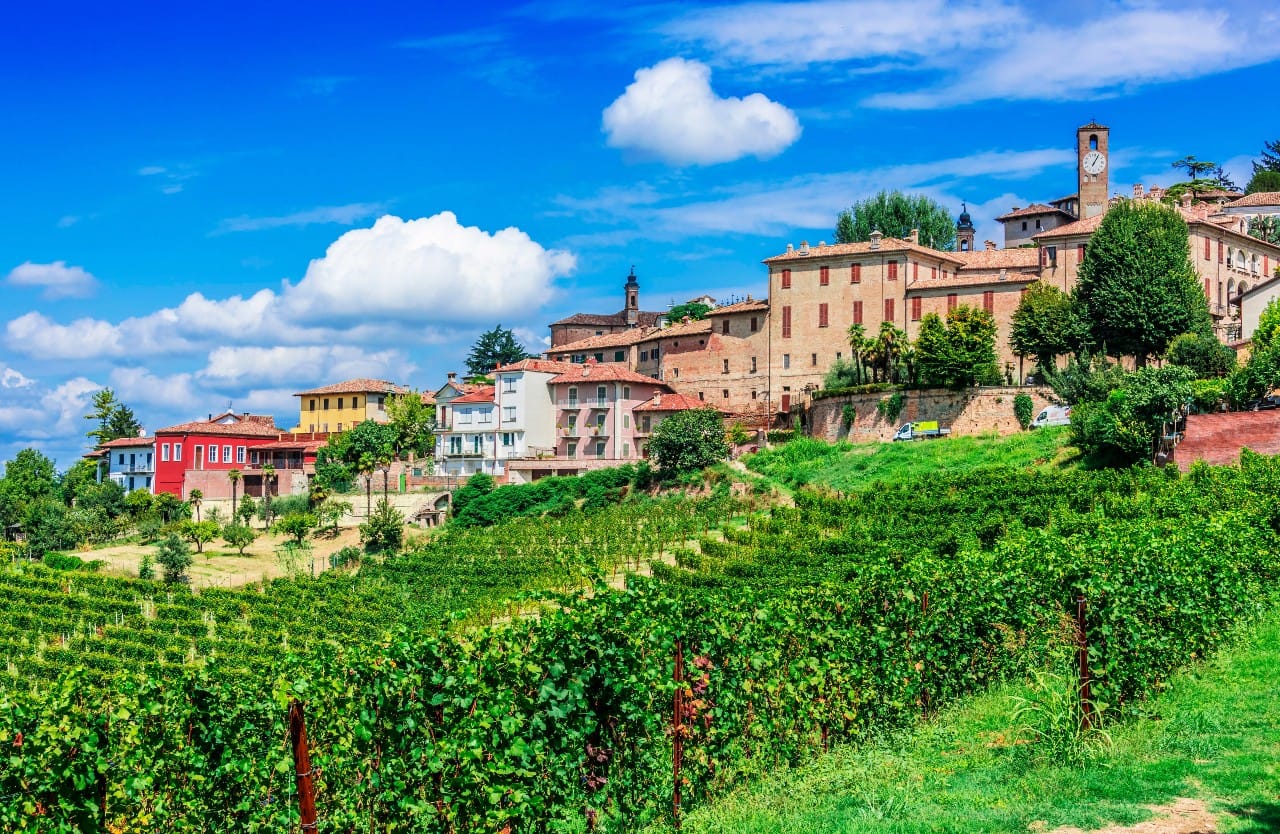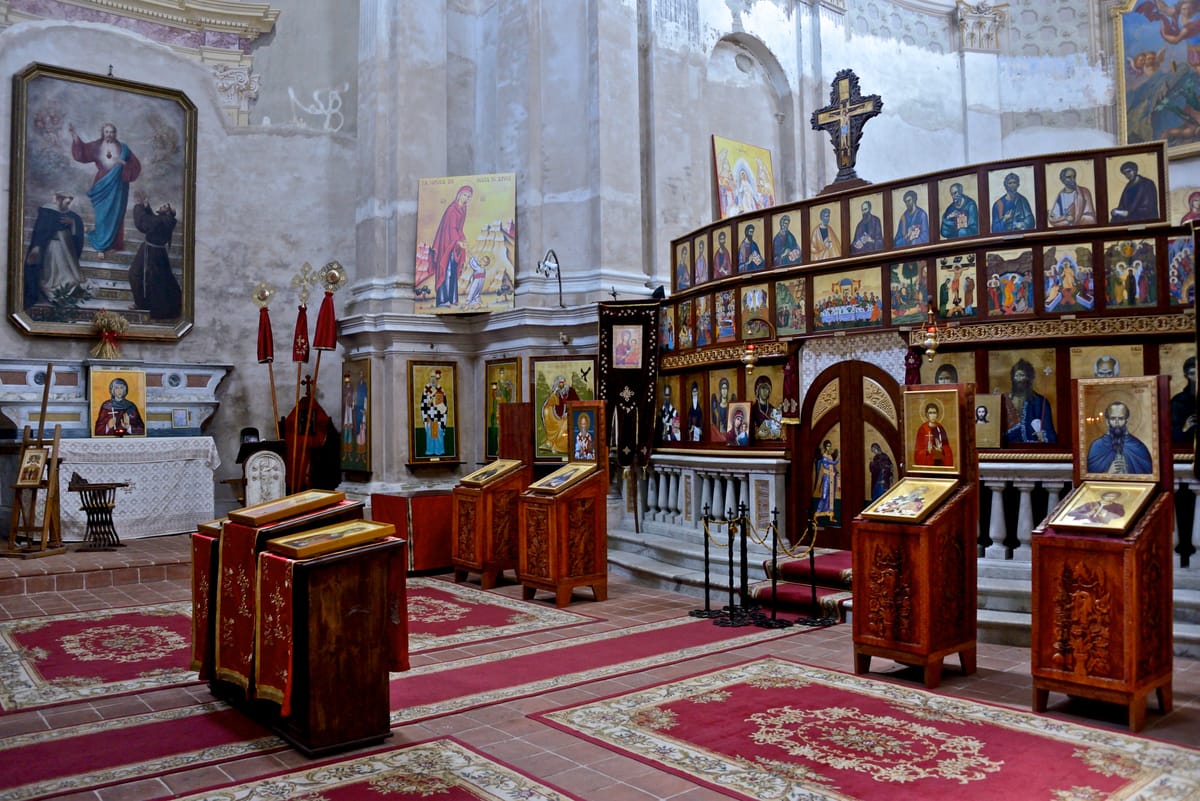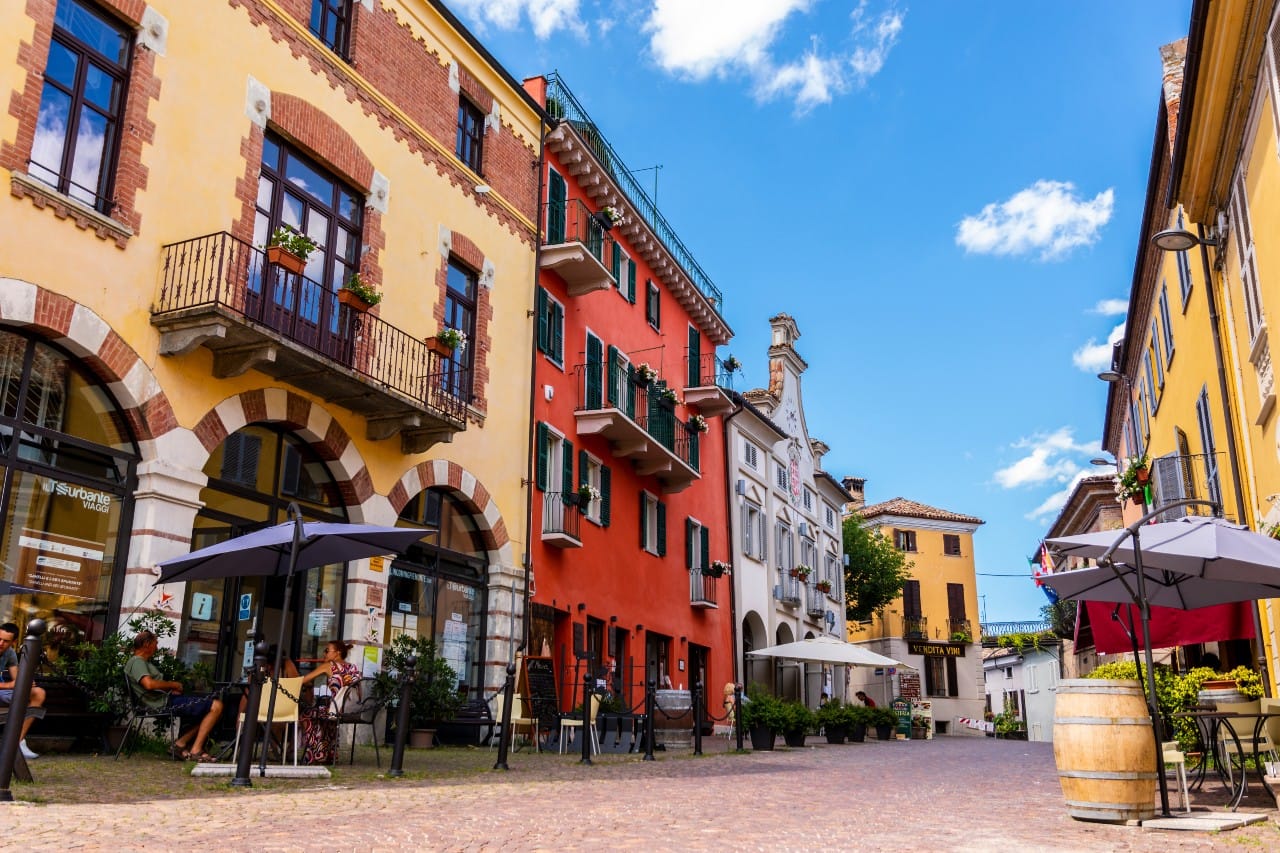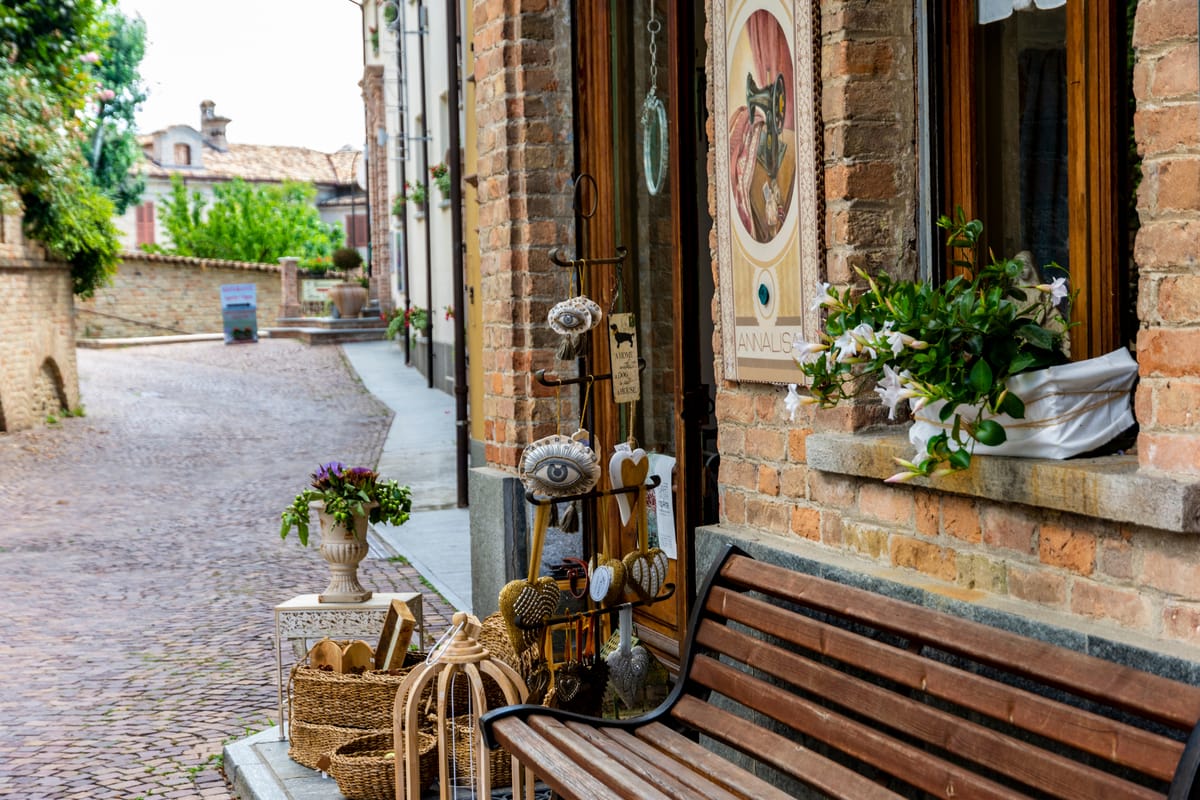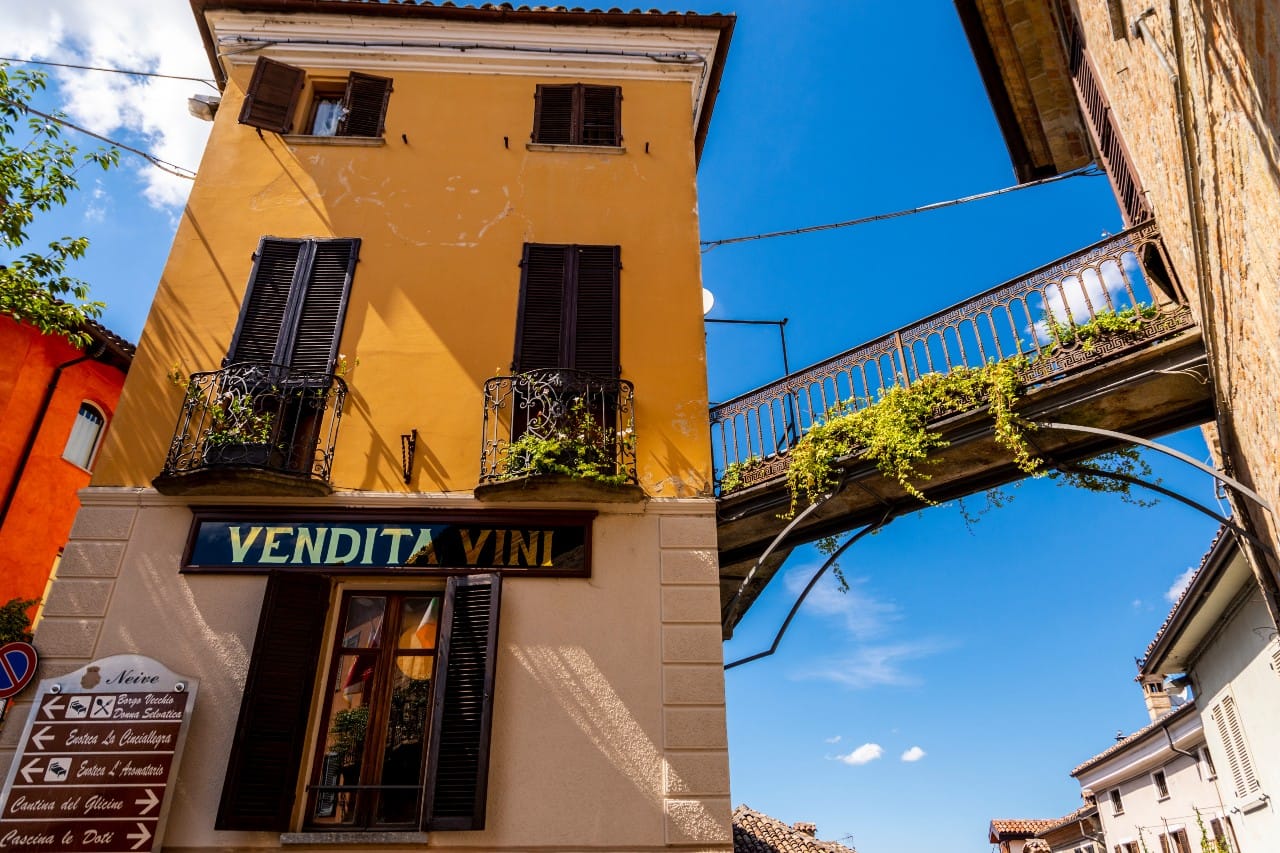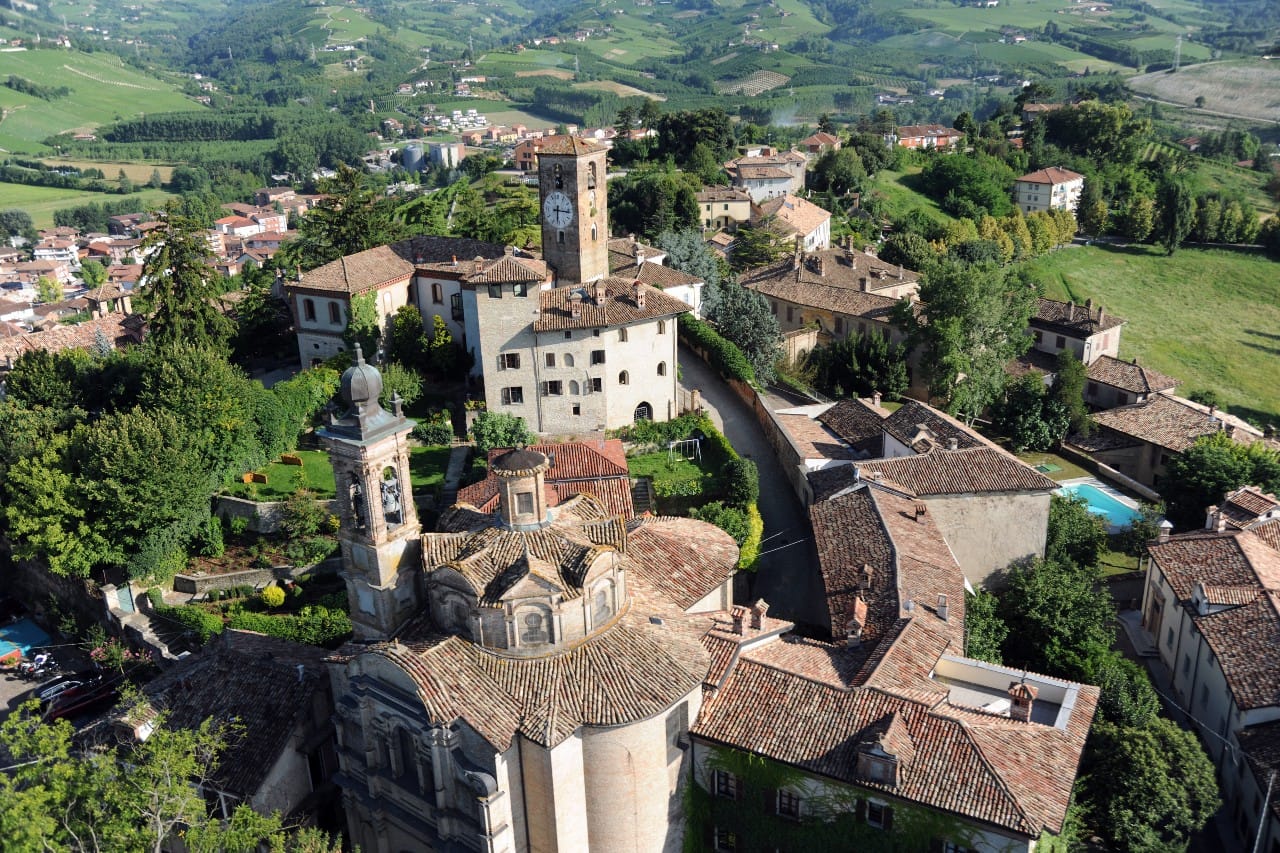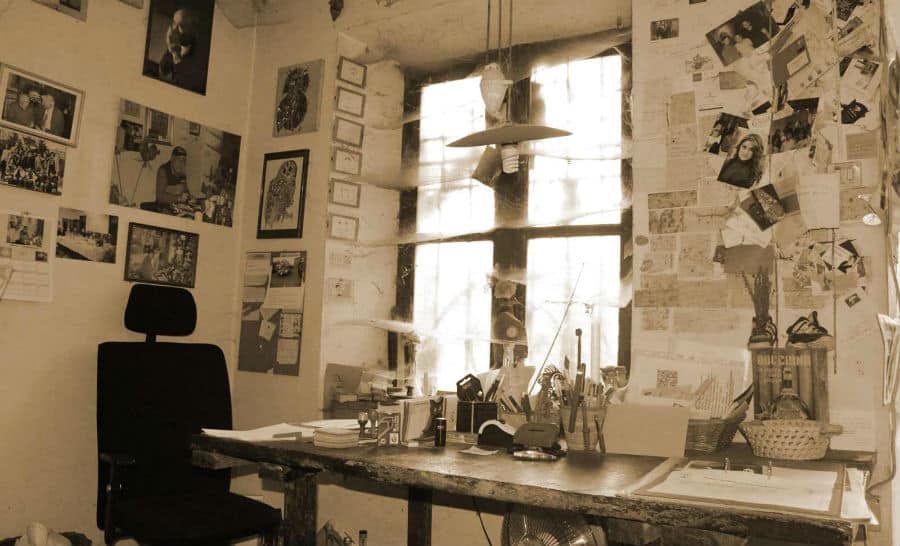Neive is a small and charming village located in the heart of the Langhe, a hilly area famous throughout the world for its scenic beauty and the quality of its wines. This charming village is located a few kilometers from Alba, precisely 13 km, and is also easily accessible from other important towns in the area, such as Barbaresco and Castiglione delle Lanze. Its location, on a small hill overlooking the surrounding valleys and vineyards, makes it a perfect place to enjoy breathtaking views, especially during the harvest seasons, when the colors of the vines turn into a kaleidoscope of hues from green to yellow, red to burgundy.
The village of Neive is divided into two main areas: the upper part, which retains its ancient medieval layout, and the more recent part, called Neive Borgonuovo, which is developed on the plateau below, crossed by the Tinella Torrent. This subdivision has allowed the old part of the town to remain virtually intact, thus preserving the charm of a medieval village that appears suspended in time. Walking through its cobbled streets, one has the feeling of being transported back through the centuries, to a place where history still seems to be alive and palpable.
Neive is a town that has flourished because of its strategic location and natural resources. Its economy has historically been tied to the cultivation of vines, which gave rise to a wine-making tradition that continues to thrive today. The town is known as the "land of four wines" for the production of Barbaresco, Barbera, Moscato and Dolcetto, four of the most prestigious wine varieties in the Langhe. It is no coincidence that Neive has been chosen over the centuries as the residence of the local landed gentry and bourgeoisie, who built splendid palaces in the village, many of which can still be seen today, such as the Palazzo dei Conti Bongioanni Cocito, an elegant example of 18th-century Baroque architecture.
The history of Neive is closely linked to the wars and power struggles that characterized the Langhe during the Middle Ages. The village, in fact, was located along the passage routes of the various local lords who contended for these rich and fertile lands. The small medieval hamlets developed around castles and towers, symbols of the power of the nobles, and Neive was no exception. The ancient castle, built in the 12th century, was partly destroyed during one of the many wars between the municipalities of Asti and Alba, but the tower that remains is still visible today and is an important testimony to the village's past. The Clock Tower, the symbol of the ancient municipality, is one of the most representative buildings in Neive and is still one of the highest points of the village, from which there is a spectacular view of the surrounding hills.
The heart of the village is Piazza Italia, an elegant space that resembles an eighteenth-century drawing room, overlooked by noble palaces and the town's administrative offices. In this square, stands the old Town Hall building, with its elegant portal and clock that marks time in this small, quiet community. The square is also a gathering place for locals and tourists, who can enjoy typical dishes of Piedmontese cuisine, such as bagna caôda, tajarin with truffles, and raw meat all'albese, accompanied by fine local wines.
Neive is also a point of reference for lovers of food and wine tourism. In addition to wine production, which has made the town famous throughout the world, Neive is famous for its wineries, which attract visitors from every corner of the globe. Among the most famous wineries are those of Bruno Giacosa, one of Italy's most renowned winemakers, and that of Romano Levi, famous for his grappas, which have become collector's items thanks in part to the beautiful hand-painted labels by Levi himself. These places are an authentic immersion in the Langhe wine tradition and offer visitors the opportunity to taste the area's best wines, often accompanied by typical products, such as the white truffle, which grows in the nearby hills.
Neive is not only a place to visit for its beauty and history, but it is also a place to enjoy a complete sensory experience, made up of breathtaking landscapes, fine wines and a cuisine that tells of the traditions of a unique land. Today, Neive has officially joined the club of Italy's Most Beautiful Villages, a recognition that celebrates its charm and the preservation of its historical and cultural heritage. A trip to Neive is a journey into the heart of the Langhe, among hills, vineyards and ancient traditions that tell the story of an area that, even today, continues to amaze and fascinate those who visit it.


